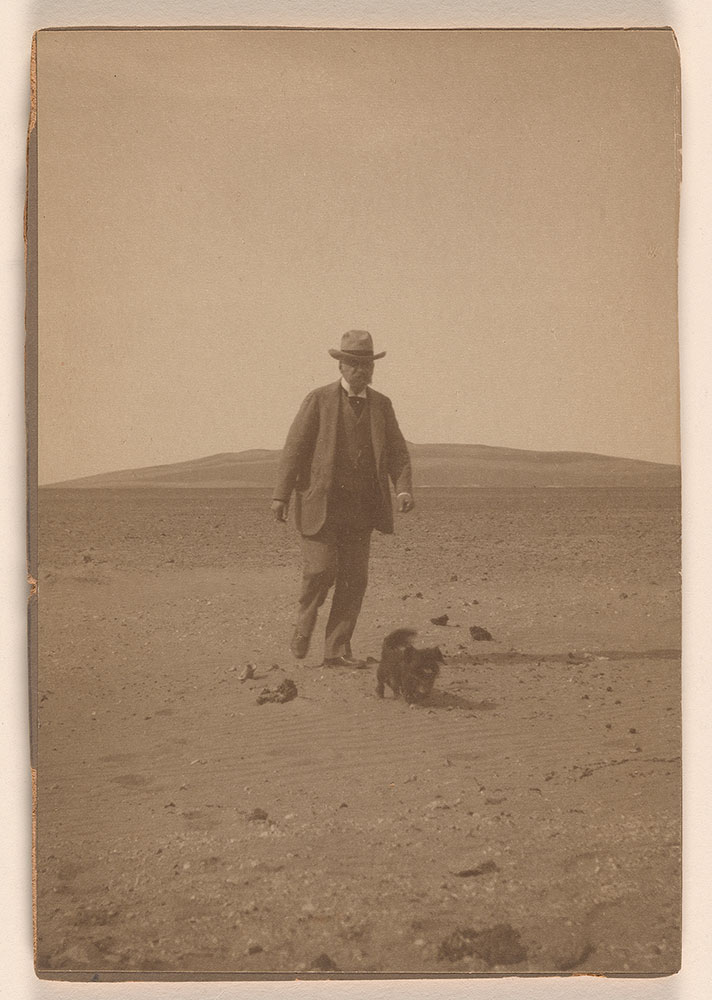
J. Pierpont Morgan and the dog Shun
Egypt between ca. 1900 and 1913
Archives of the Pierpont Morgan Library, New York. ARC 3018.2.2
Jesse Erickson:
In 1909 Morgan and his companions ventured into Egypt for an expedition, an annual excursion. Morgan saw these places as evidencing a kind of biblical literalism. Their journey led them to the Monastery of Saint Jeremiah in Saqqara, nestled near the renowned pyramids of Giza. The complex where the impressive church was situated included, among other notable architectural treasures, an archaic type of pulpit known as an ambon.
Their expedition, however, did not stop there. As recounted in Jean Strouse’s biography, Morgan: American Financier, the next month had the small crew of explorers embarking on a large houseboat called a dahabiyeh. They traversed thirty-five miles along the Nile to reach the excavations at Lisht. Led by Albert Lythgoe, the team witnessed hundreds of workers clearing debris and sand at the pyramid of Senwosret I. The gradual reveal of the ancient remains dating back to almost 2000 BC left a lasting impression on Morgan.
The party later ventured to the Great Oasis at Khargeh where they took in the views and scenes of the historic landscape. Further unearthing Hibis temple, the expedition’s archaeologists shed more light on the early Christian era at Khargeh. The site’s tomb-chapels were adorned with frescoes depicting biblical scenes and houses that dated back to the fourth century AD. Morgan expressed his satisfaction to Lythgoe, confessing that he never anticipated witnessing such a wealth of intriguing artifacts and historical marvels.
